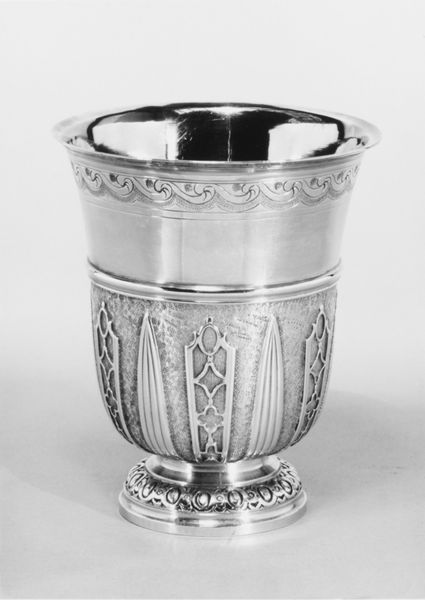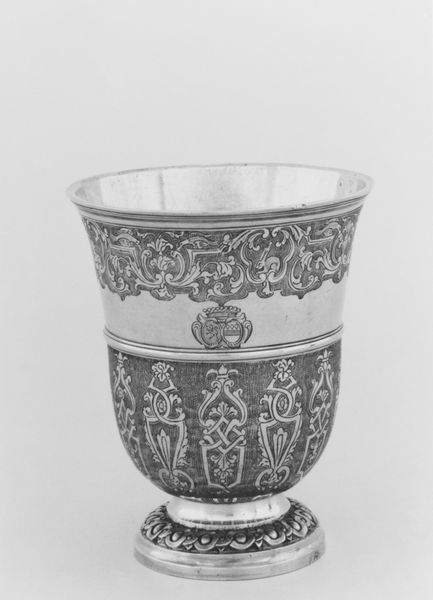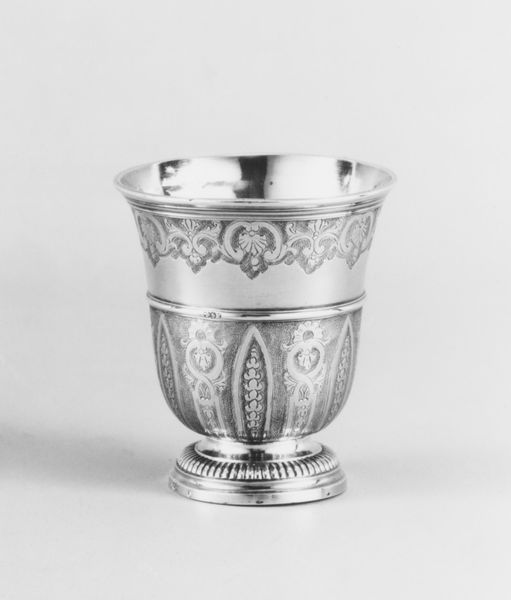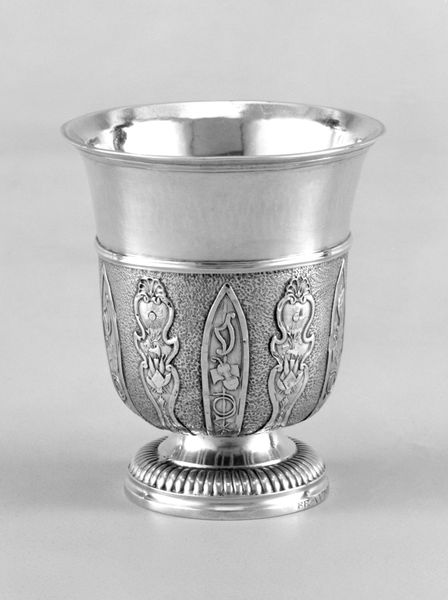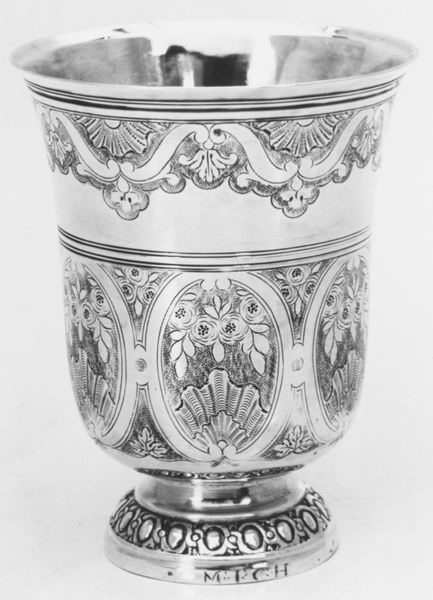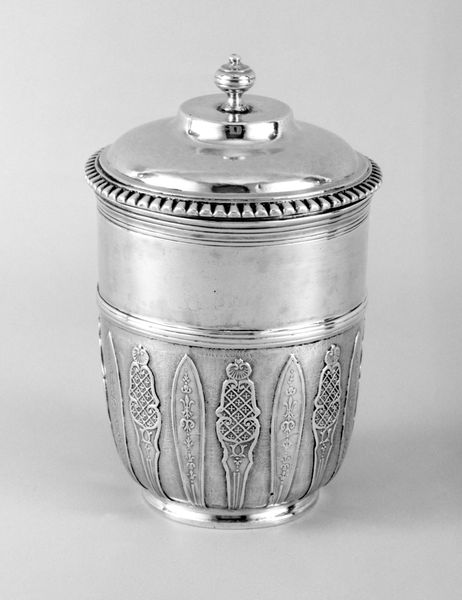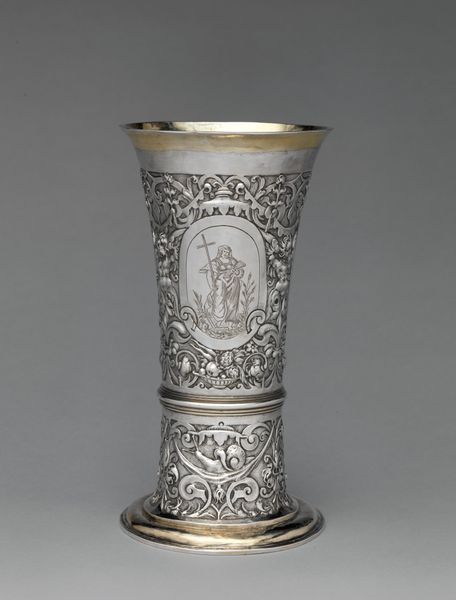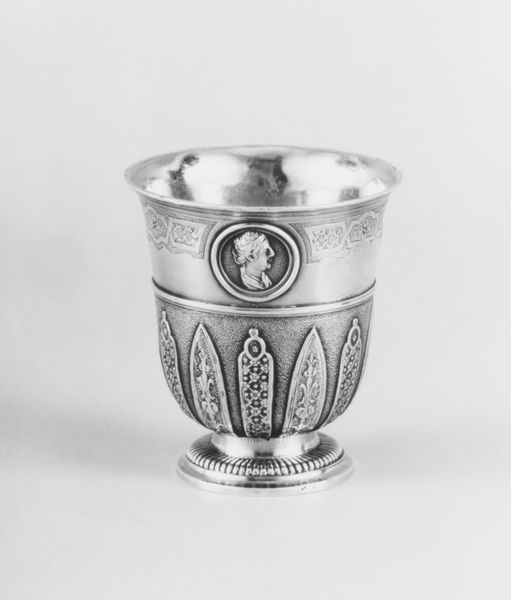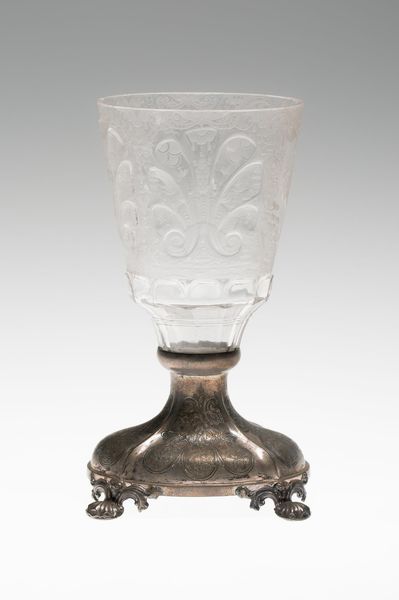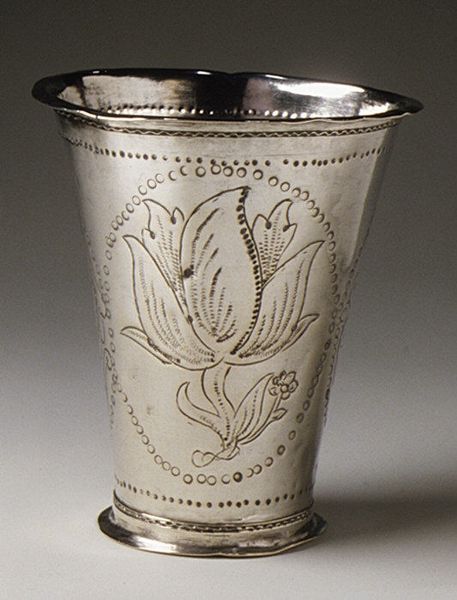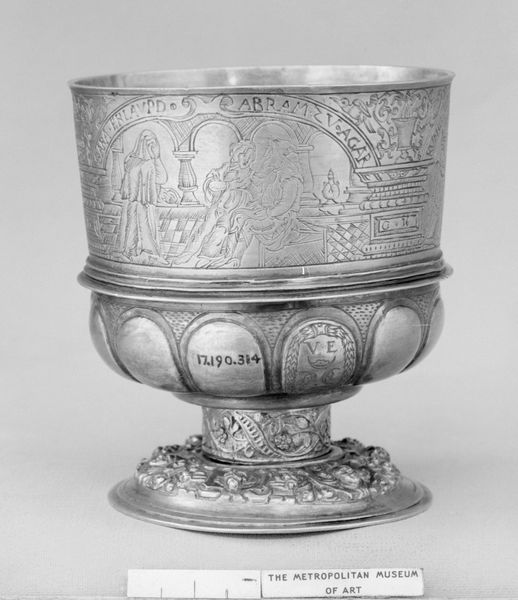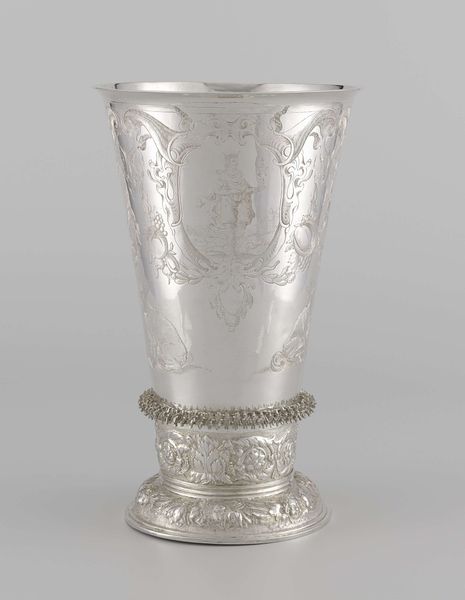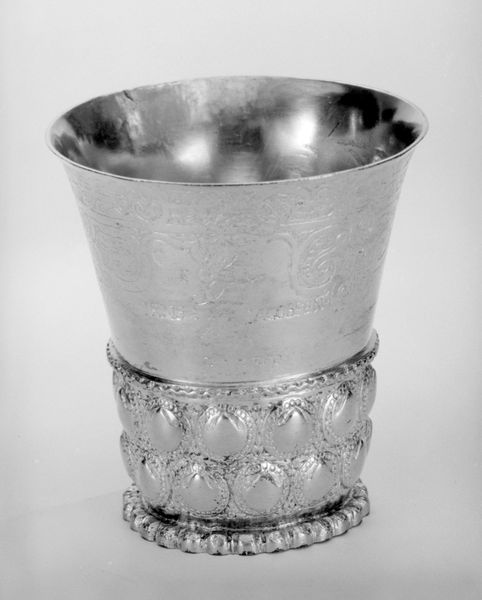
silver, metal, sculpture
#
silver
#
baroque
#
metal
#
sculpture
Dimensions: Height: 4 in. (10.2 cm)
Copyright: Public Domain
Editor: This elegant silver Beaker was crafted between 1704 and 1712 by Jean-Baptiste Petit. The intricate Baroque details catch my eye, and I can't help but wonder about its purpose. How might the social context of its time influenced its creation and function? Curator: That’s a great question! The Beaker reflects the values and power structures of its era. Consider the Baroque style. It flourished in a time of absolutist monarchs and a powerful Church. How do you think a piece like this played into that environment? Editor: Well, its elaborate ornamentation and fine material must have signified wealth and status, suggesting it would have been accessible only to an exclusive social stratum. Was it meant for secular use, like drinking? Or might it have been intended for liturgical practices? Curator: Exactly! The visual vocabulary—the ornate details, the reflective surface of the silver—broadcasts wealth and refinement, solidifying social hierarchies. We need to look beyond the object itself and ask who commissioned it, who used it, and where it was displayed. Was it displayed, indeed? Such context affects its artistic assessment and significance to Baroque social dynamics. Now, notice how this kind of artwork also found its place in aristocratic collections... what statement was it trying to make by exhibiting a communion-like chalice? Editor: So, beyond being aesthetically pleasing, its political undertones emphasize the period’s obsession with authority, influence, and conspicuous consumption. Thanks for expanding my view of this magnificent cup! Curator: Indeed! Understanding art history provides insight into not only the artwork but how institutions or societal conditions affected its significance, function, or design. And it's fun.
Comments
No comments
Be the first to comment and join the conversation on the ultimate creative platform.
